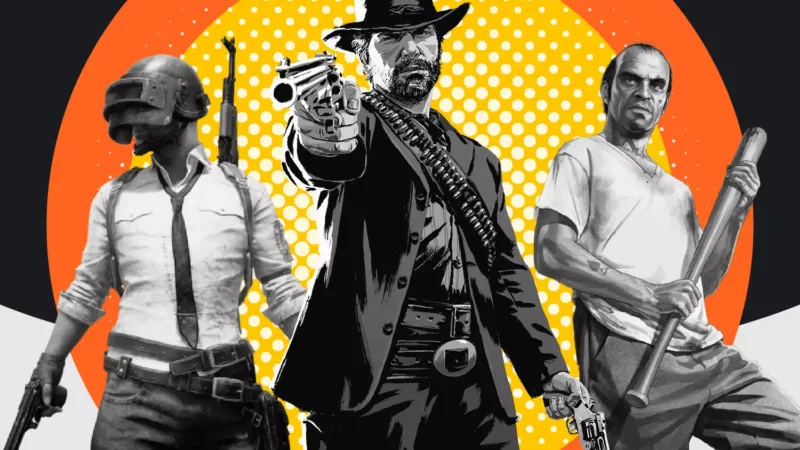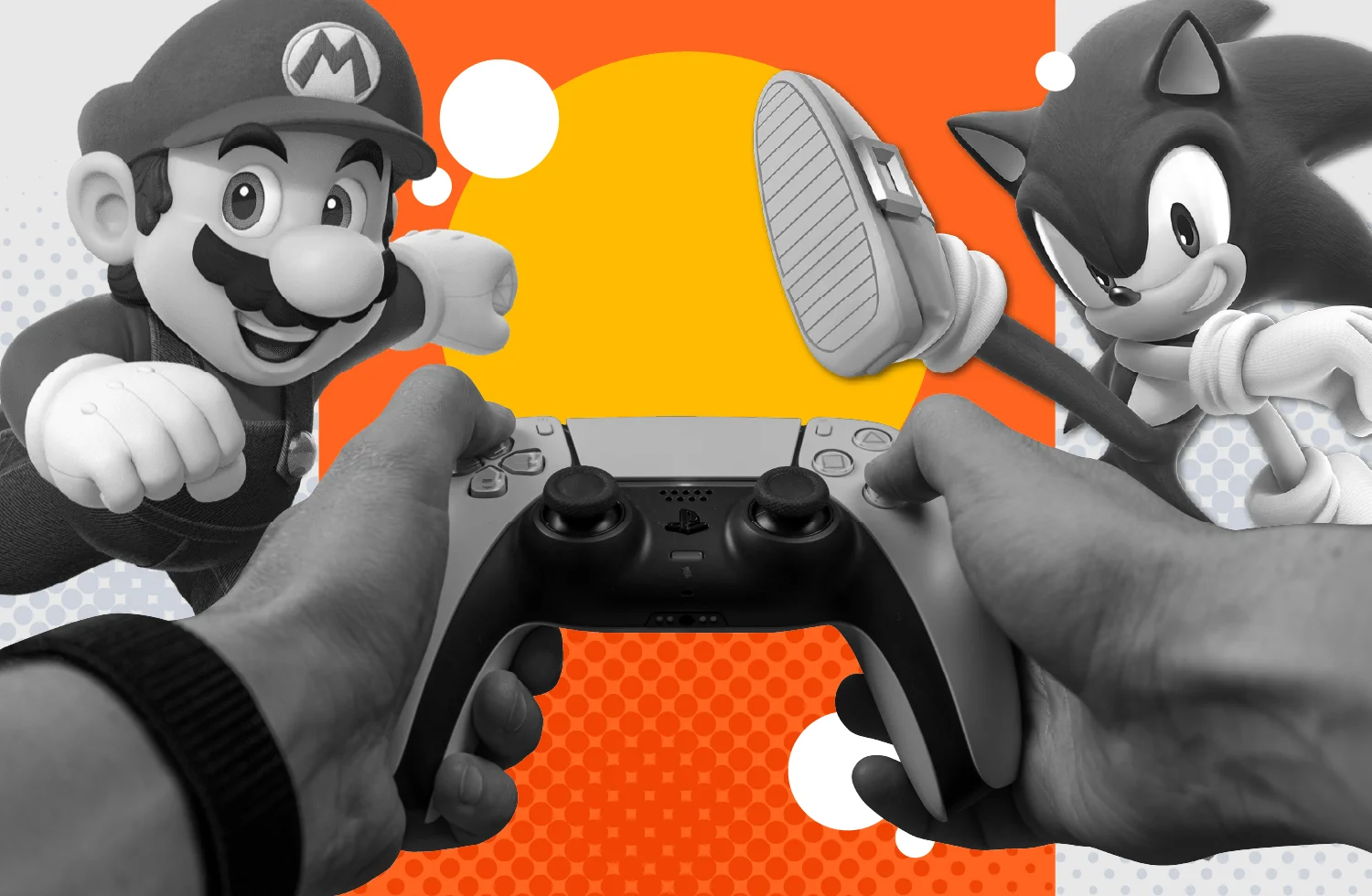
We surveyed over 1,000 gamers and found that the gaming community is more diverse than ever. Gaming was once widely perceived as a niche hobby for teenagers, but has evolved into a multi-billion-dollar ecosystem that defies every stereotype. From solo players craving social connection to full-time workers dominating the player base, our new survey data defies conventional beliefs about gaming at every turn.
Our goal was to get feedback from gamers across demographics to uncover the truths behind how they think and feel. Our findings reveal a complex landscape where gamers thrive in community settings, microtransactions aren’t the villain compared to loot boxes, and the next generation dreams of building gaming content empires from their bedrooms.
These latest gaming trends paint a picture of an industry in transition, and one where many of the traditional assumptions no longer hold true.
Key Takeaways
- 57.3% of solo gamers still prioritize social connections in their gaming experience, revealing a “social paradox” in modern gaming.
- 15% of gamers cite microtransactions as a top frustration despite widespread online complaints about monetization.
- 46.8% of gamers are employed full time, debunking unemployment myths surrounding the gaming community.
- Nearly 40% of gamers want age restrictions for loot boxes, with 71.2% holding negative sentiment toward the practice.
- Men show more interest in content creation at 49.2% compared to 36% for women, with younger demographics leading the charge.
- Women are significantly more likely to prefer solo experiences, with 61.9% choosing them compared to just 51.2% of men.
Over 57% of Solo Gamers Still Seek Social Connections in Gaming
With 57% of gamers preferring single-player games, it’s natural to assume gamers don’t enjoy social interaction, but that’s not the case. When asked, 57.3% of those same gamers say social aspects significantly influence their overall enjoyment of games. This “social paradox” may indicate that gaming has evolved beyond the controller in a digitally connected age.
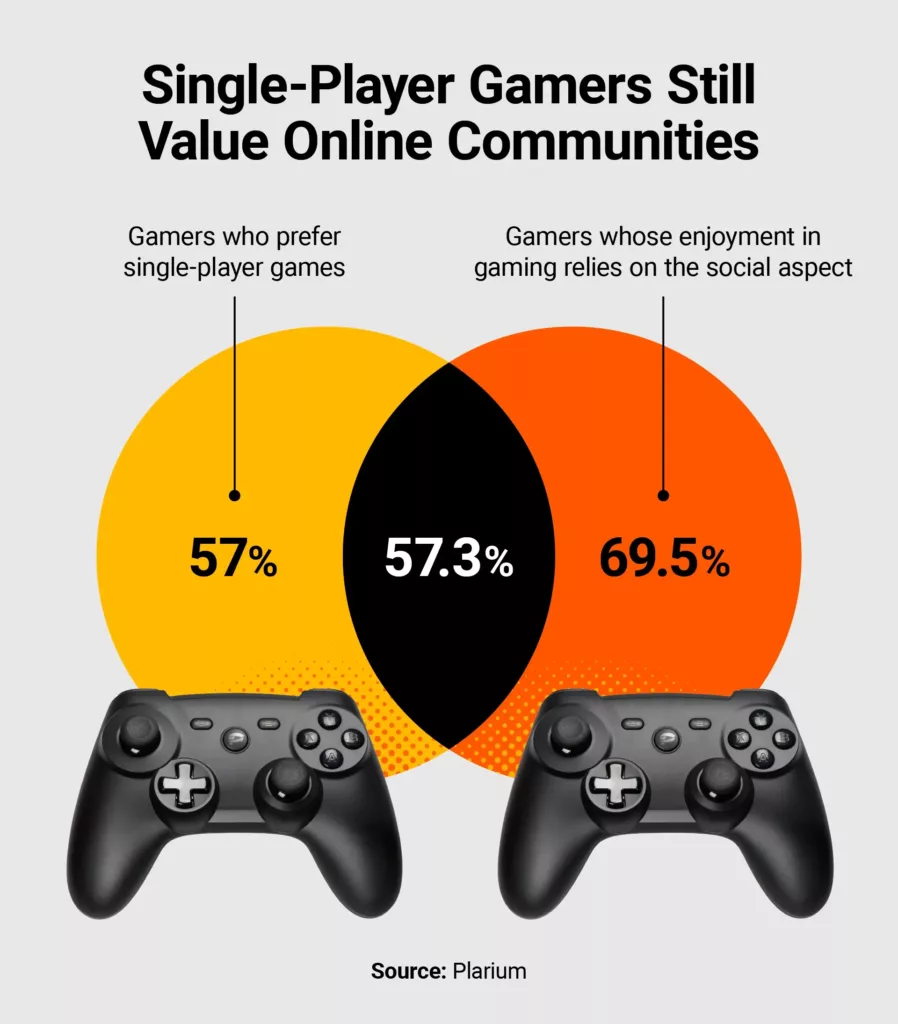
Single-player experiences now foster thriving communities on Reddit, Discord, and specialized forums where players dissect strategies, share experiences, and celebrate their favorite titles together. A player might spend hours alone in games like The Witcher 3 or The Legend of Zelda: Tears of the Kingdom, then immediately jump online with thousands of other players to discuss their narrative choices or get tips.
This trend shows that players want great stories and the personal pacing of single-player games while craving the shared cultural moments that come from discussing and analyzing these experiences with others.
Social connection also extends to cross-platform play, which 75.8% of gamers find important for their gaming experience, with a quarter of respondents considering it “extremely important” (25.1%).
15% of Gamers List Microtransactions as a Top Frustration
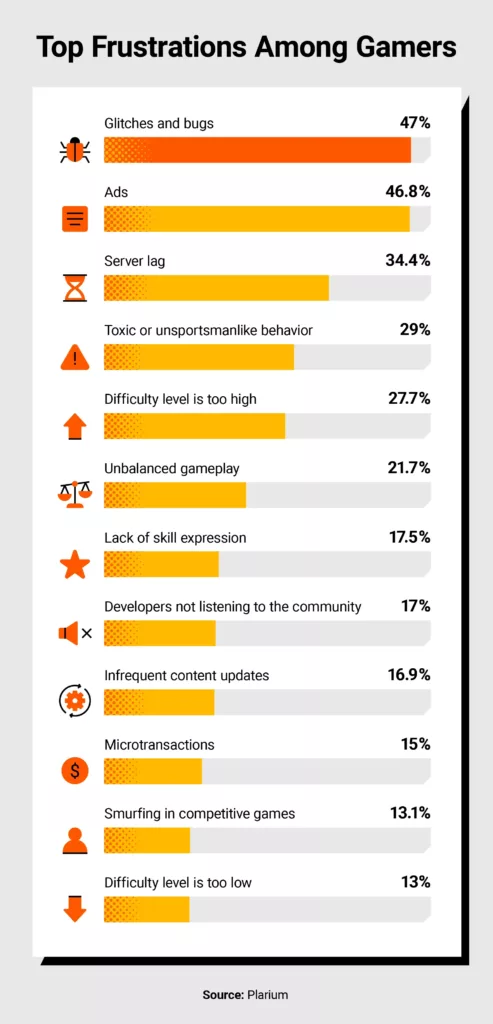
Current gaming trends find that the internet’s loudest complaints don’t always reflect how players actually feel. While online discourse frequently revolves around predatory monetization, only 15% of gamers cite microtransactions among their top three frustrations. Instead, technical issues dominate:
- Glitches and bugs: 47%
- Ads: 46.8%
- Server lag: 34.4%
- Toxic or unsportsmanlike behavior from other players: 29%
- Difficulty level is too high: 27.7%
- Unbalanced gameplay: 21.7%
- Lack of skill expression: 17.5%
- Developers not listening to the community: 17%
- Infrequent content updates: 16.9%
- Microtransactions: 15%
- Smurfing in competitive games: 13.1%
- Difficulty level is too low: 13%
The disconnect between online complaints and actual player sentiment may reveal an important truth: Most gamers are willing to accept microtransactions when the core experience remains intact. This suggests that developer resources might be better spent on polish rather than managing monetization controversies.
The disconnect between online complaints and actual player sentiment may reveal a deeper truth: Most gamers are willing to accept microtransactions when the core experience remains intact.
This tolerance aligns with where the industry is headed. According to the 2023 Griffin Gaming Partners Game Development Report, 95% of game makers are developing or maintaining a live service title. And in Newzoo’s 2025 PC and Console Gaming Report, microtransactions accounted for 58% of all PC gaming revenue in 2024.
In other words, monetization is the foundation of modern game design. For developers, that means investing in polish and performance may do more to earn player goodwill than overcorrecting for monetization concerns.
The Majority of Gamers Are Employed Full-Time, Debunking Unemployment Myths
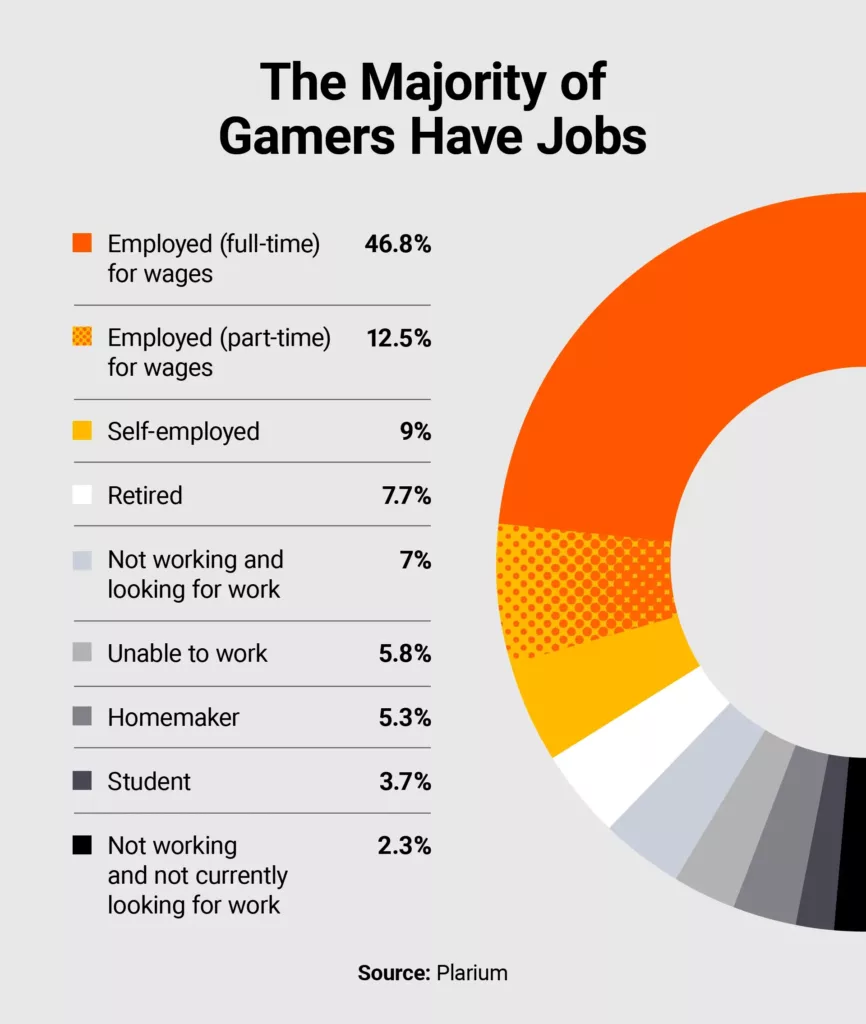
Gaming’s demographic reality shatters outdated stereotypes about who plays video games. Roughly 47% of survey respondents work full-time, establishing gaming as a mainstream hobby for working professionals, rather than a refuge for the unemployed. This data directly contradicts persistent myths about gamers being “lazy” or avoiding responsibility.
These trends reflect gaming’s evolution from childhood pastime to a lifelong hobby. As the first generation of gamers ages into their careers and retirement, they’re bringing their gaming habits with them. The result is a player base that resembles the broader population. This data can help guide how the industry approaches marketing, game design, and community management.
Nearly 40% of Gamers Want To See Age Restrictions for Loot Boxes
While microtransactions don’t heavily frustrate players, loot boxes tell a different story entirely. About 39% believe loot boxes should face age restrictions, while 32% consider them exploitative and think they shouldn’t exist at all. Combined, this is a 71.2% negative sentiment.

This finding poses an interesting contradiction with the microtransaction data. Players seem comfortable with direct purchases but draw a hard line at randomized purchases that mirror gambling mechanics. The distinction suggests that gamers value transparency and choice in their spending.
The call for age restrictions showcases a growing awareness of the psychological impact of loot boxes, particularly on younger players. This likely stems from high-profile loot box regulations and increasing research into the addictive potential of randomized rewards. The results suggest that the gaming community is becoming more sophisticated in distinguishing between acceptable and problematic monetization.
The Next Generation Aspires To Create Professional Gaming Content
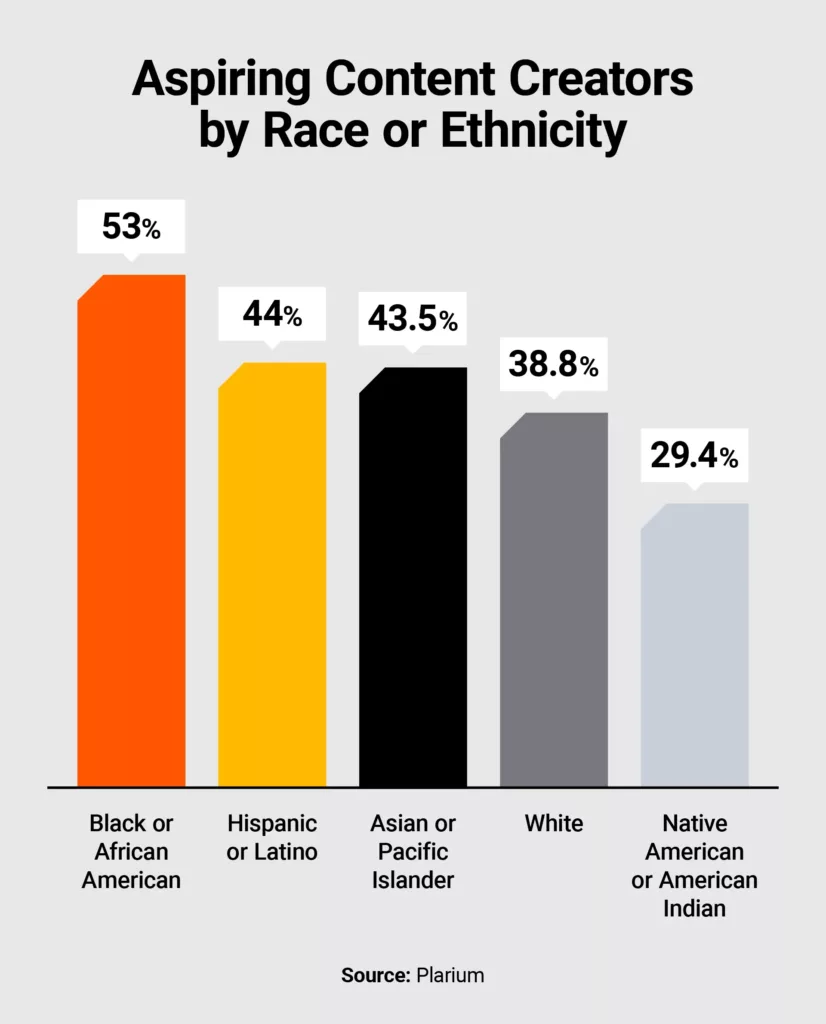
The creator economy is changing the aspirations of gamers, with younger players and men viewing content creation as a viable career path. Men show higher interest (49.2%) compared to women (36%) in becoming gaming content creators, but the generational divide is even more interesting.
Gen Alpha and Gen Z gamers show strong interest in content creation, with 74.9% expressing moderate to extreme interest, compared to 64.2% of millennials and Gen X.
Black or African American respondents show particularly high interest (53%) in content creation compared to White respondents (36.8%). This isn’t just daydreaming, either. Young streamers of color like Kai Cenat and IShowSpeed have built multi-million dollar empires, proving the financial viability of gaming content.
The rise of streaming platforms, like Twitch and YouTube, has democratized content creation, allowing anyone with skill and personality to build an audience and monetize their gaming expertise. This creator economy boom represents one of the most exciting gaming market trends, reshaping how players view gaming from pure entertainment to a potential career path.
Millennials Continue Flocking To RPGs as a Top Genre
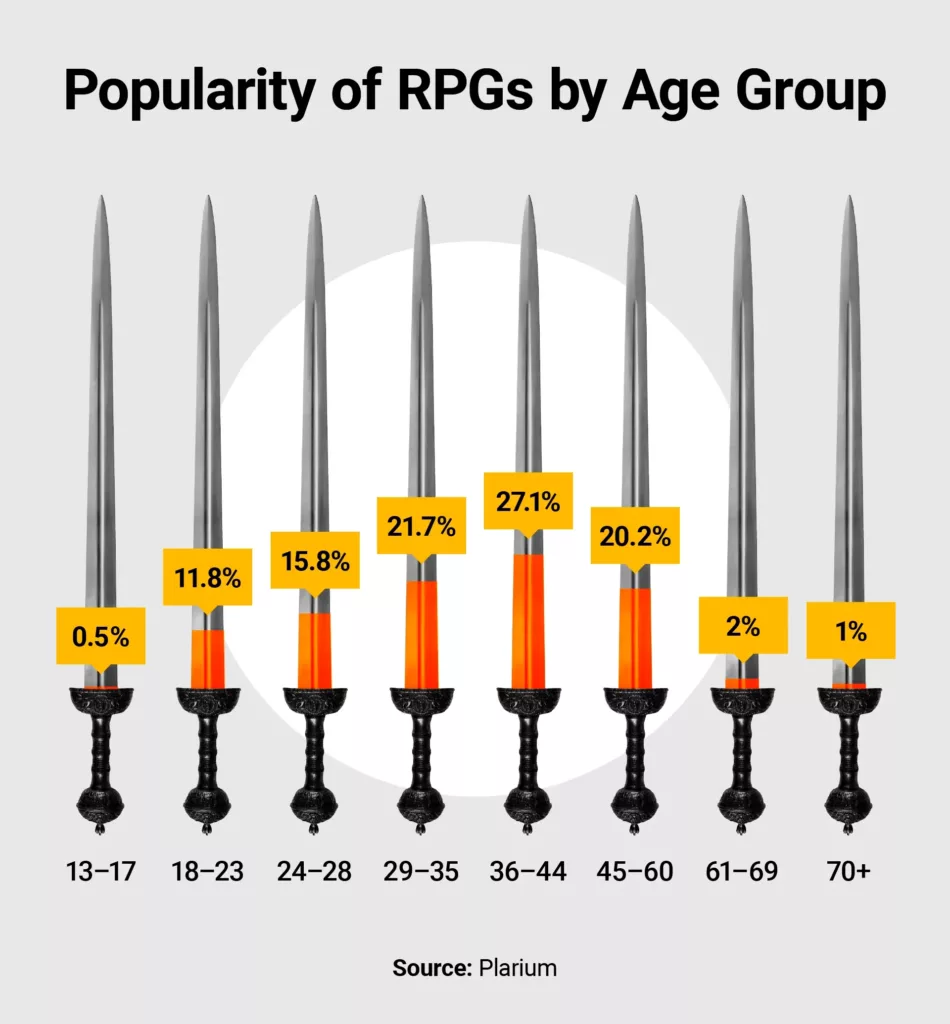
From turn-based RPGS to action RPGs, role-playing games are a gaming staple, with nearly 20% of respondents naming RPGs as their favorite genre. The demographic breakdown reveals fascinating patterns in who gravitates toward these immersive experiences.
Gamers aged 36-44 show the highest RPG preference at 27.1%, demonstrating that older millennials continue flocking to RPGs as they age. This group grew up with classics like Final Fantasy VII, Chrono Trigger, and Pokémon Red and Blue. Gender differences remain minimal, with men at 20% and women at 18.7%.
However, ethnicity reveals some more pronounced preferences. Black or African American respondents lead at 25.7%, followed by Hispanic or Latino gamers at 22%. When it comes to employment status, students show the highest overall affinity for RPGs at 28.2%.
This data reinforces RPGs’ unique position as one of gaming’s most inclusive genres, appealing across gender, age, and ethnic lines while offering the deep, personalized experiences and stories that define modern gaming.
Some of the other popular genres across all demographics included:
- Puzzle: 36.2%
- Shooter: 33.1%
- Strategy: 29.6%
- Action-adventure: 26.3%
- Fighting: 24.7%
Women Significantly Prefer a Solo Gaming Experience
Gender creates one of the most notable divides in gaming preferences: 61.9% of women prefer single-player games, compared to just 51.2% of men. This difference likely reflects personal play styles and how each group experiences online gaming environments.
While one may assume toxicity is the reason women prefer solo games, only 25% point to toxic behavior as a top frustration, which may indicate that discrimination in gaming is improving. However, the overwhelming preference for solo experiences may also suggest that many women are simply avoiding potentially toxic online environments altogether.
Gaming appears to be a key social outlet for men, with 35.7% preferring multiplayer experiences compared to just 24.5% of women. This suggests that for many men, gaming is a way to connect, compete, and collaborate with others. In contrast, 83% of older gamers (ages 61 and up) prefer single-player games, showing virtually no interest in competitive multiplayer, highlighting a generational divide in how players engage with games.
The results also found that 88% of gamers under 23 value social aspects, compared to 69% of gamers 24-60, and dropping to just 26% for gamers over 60. This age-related decline in social gaming interest may indicate that gaming may shift from a social activity to a personal escape or relaxation tool as players grow older.
Gamers Yearn for an Uninterrupted and Immersive Gaming Experience
Our survey data makes one thing clear: Players crave immersive experiences that draw them into richly crafted virtual worlds, and they have little patience for anything that breaks that immersion.
- 47% listed glitches and bugs as their top frustration, making technical issues the leading immersion-breaker.
- 60.2% say a compelling storyline is extremely or very important when deciding whether to purchase a single-player game, highlighting the value of narrative depth.
- 70.2% are likely to try a game based solely on stunning visuals.
- 57% prefer single-player games, suggesting a strong interest in controlled, story-driven experiences over chaotic or competitive ones.
- 34.4% cited server lag, and 46.8% pointed to ads as top frustrations.
These data points show that gamers seek experiences that feel polished, uninterrupted, and transportive. That’s why technical issues like bugs and lag frustrate players more than monetization tactics like microtransactions.
Men Want To Shoot Things and Women Want To Solve Problems
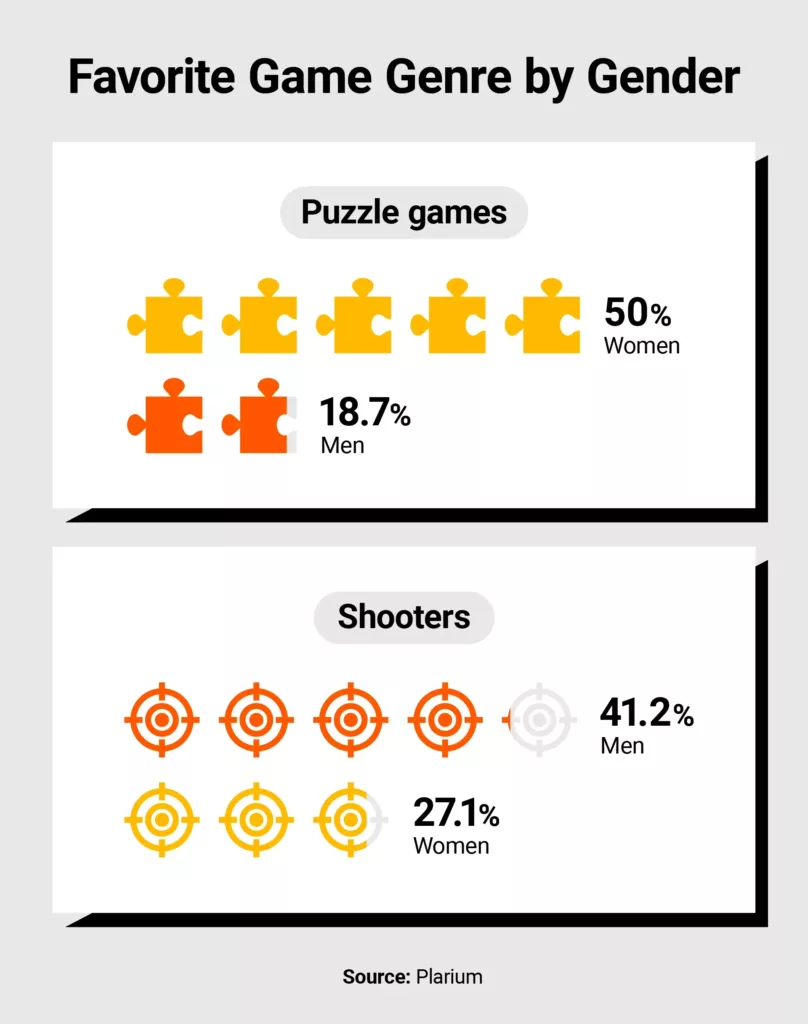
When choosing a favorite genre, there’s a clear gender divide, with women showing significantly higher affinity for puzzle games (49.9% vs. 18.7% for men) and simulation games (24.4% vs. 14.8% for men). Meanwhile, shooter games remain overwhelmingly male-dominated (41.2% vs. 27.1% for women).
These preferences may indicate that female gamers gravitate toward games that reward strategic thinking, creativity, and problem-solving, while men prefer direct action and competition.
We also found that age adds another layer to genre preferences. Gamers from under 13 to 60 prefer shooters (31.9%), with middle-aged gamers particularly drawn to shooters and strategy games (30.9%). However, almost 70% of gamers over 60 prefer puzzle games, suggesting that older gamers may use video games to keep their minds sharp.
These patterns reveal that gaming has successfully diversified beyond its action-oriented roots, offering compelling experiences for everyone. Whether gamers prefer thinking over shooting, building over destroying, or cooperation over competition, we live in a time where there are games anyone can enjoy.
Join the Community and Download New Games Today
Our survey results paint a clear picture that today’s gamers are more diverse and dynamic than ever. From the rise of online communities to shifting views on monetization and clear preferences across genres and generations, gaming continues to evolve, surprising, growing, and connecting people from all walks of life.
If you’re looking for a fresh experience with new games, explore a gaming library designed for today’s gamers, offering immersive experiences, rich narratives, and thriving communities. From strategy games to RPGs and puzzle games, there’s a game for you.
Methodology
The survey of 1,050 U.S. gamers and directors was conducted via Centiment Audience for Plarium between May 23 and May 29, 2025. Data is unweighted and the margin of error is approximately +/-3% for the overall sample with a 95% confidence level.


